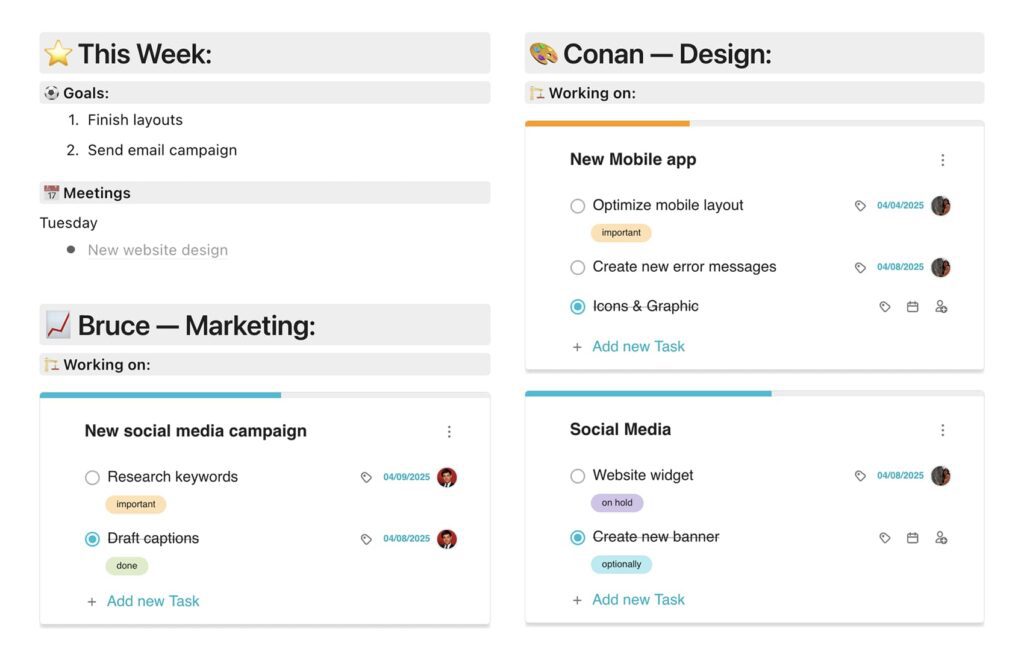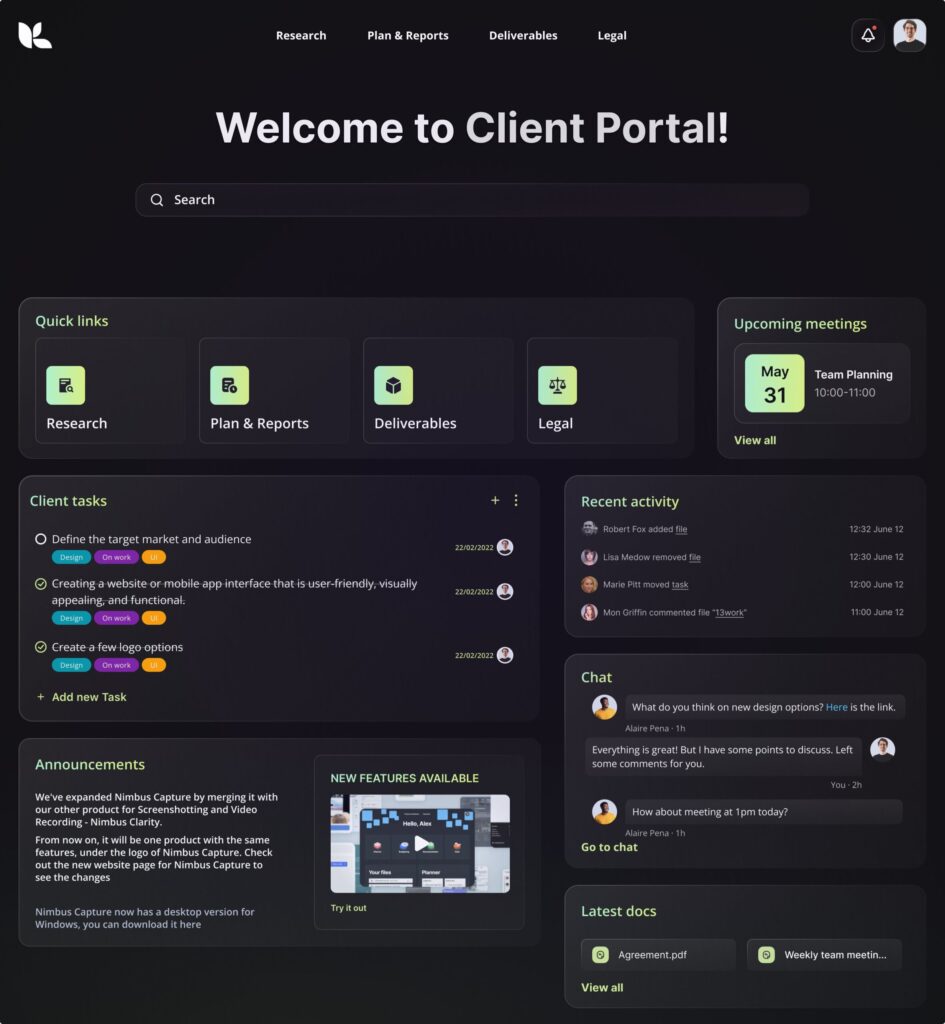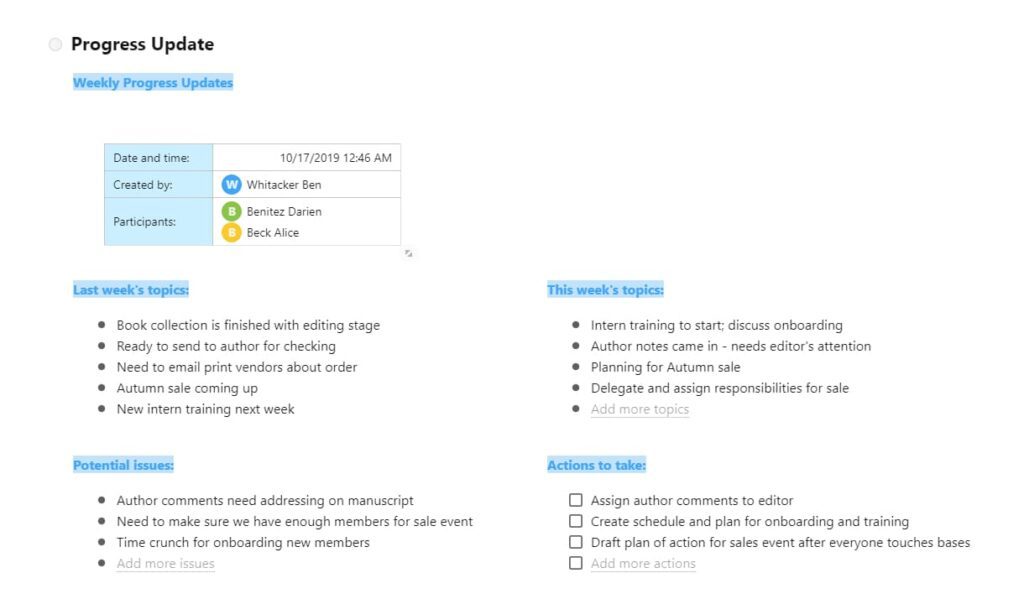
The Importance of Team Coordination and 10 Tips to Improve It
- September 30, 2022
- 12 Min read
If there were ever a time when team coordination was most crucial, it would be today. While team collaboration and coordination have always been important for any successful business, it is nowadays not only a necessity but also an art. In the era of new technologies, large companies and remote work, the way team members coordinate has a huge impact on efficiency and performance.
What is Team Coordination?
To put it simply, team coordination is the set of strategies a company uses so team members can work successfully and efficiently towards achieving goals — both the company’s and their individual goals.
If we compare a business and its employees to a machine and its cogs, implementing successful team coordination would be like fine-tuning a machine so that all the cogs are well-oiled and work seamlessly with each other.
But don’t be fooled by the simplicity of the definition. Successful team collaboration is hard and companies that are unable to implement it correctly will either fail or lack the efficiency to realize their full potential.
Types of Team Coordination
Depending on the aspect we focus on within a company or department, there are different classifications and types of team coordination. However, the most common categorization consists in looking at how that coordination happens, and when we do so, we encounter two types: explicit and implicit coordination.
Explicit coordination

Explicit coordination involves everything that the team members do explicitly to manage their tasks and achieve goals. At the same time, explicit team coordination can be based on planning or communication.
Planning-based coordination refers to the actions that deal with predictable aspects of the job, like using to-do lists, timelines, guides, SOPs and so on. Communication-based coordination, on the other hand, involves information exchange processes, whether formal or informal, such as work meetings, conversations during breaks and email exchanges.
As you can see, this type of collaboration is tangible and measurable to some degree, which is why it is called explicit coordination.
Implicit coordination

Implicit coordination happens when team members anticipate the task demands and the needs and actions of their colleagues without the need for explicit communication or to create a detailed plan. It is based on each member’s ability to anticipate and adjust to each other and the task.
This type of interaction is non-tangible and, for this reason, more difficult to be quantified, which is why it is called implicit. However, it has a big impact on achieving business success, especially when looking at the big picture.
Implicit coordination involves things like being proactive in sharing the workload, anticipating colleagues’ needs and adapting to the group’s expectations.
As you may have already guessed, this type of coordination has been explored less and it is currently viewed as the key to fully unleashing teamwork productivity potential. This explains the current popularity of team building activities, emotional psychology in the workplace and other innovative approaches in human resources such as developing a team mental model.
Research carried out by data scientists shows that in the highest performing teams there is a clear balance between implicit and explicit processes, indicating that the team’s mental model and shared representation of the situation is critical for its successful coordination.
Other types of coordination
While the explicit vs implicit approach focuses on how it happens, we can also focus on where team coordination happens.
As you know, any medium-sized company normally consists of different departments, each of which focuses on one particular area of the business: sales, accountancy, marketing, etc. And each department consists of a team of specialists in that particular area.
For this reason, in some circumstances, we also talk about intradepartmental coordination (between the members of a given department) and interdepartmental coordination (between the different departments).
Why is Team Coordination Important?
In any team, whether department teams or whole organizations, everyone must work together to achieve some common goals, and the way this is done is absolutely crucial.
Just picture a successful sports team throughout history, like the Chicago Bulls led by coach Phil Jackson with players like Michael Jordan and Scottie Pippen. What made them so successful wasn’t just each team member’s individual greatness, but rather how they put those skills together to achieve a common goal.
All those players played for other teams as well in their careers, but none were as successful as when playing together for the Bulls. None of the other teams won 6 rings in less than a decade. And that’s why team coordination is so important. It can change everything.
Let’s now break it down into how this importance translates to any company.
It prevents delays and internal conflict
In a team race, all the runners need to cross the finish line to win or, at least, complete the race. It would be a disaster if some of them finished the race while the others took a detour or stopped for a break.
In a company, it works exactly the same, between team members and departments. They must all be on the same page about their common objectives so that they can all get there at the same time, improving timing and work efficiency.
If you’ve ever worked on a web design and development project, you will probably know how frustrating it can be when the designers, the copywriters, the developers and the SEO team are not well coordinated. This simply delays the project, creates tensions and frustrations within the organization and leads to a negative customer experience.
It improves human resources administration
Similarly, as it happens between departments, the data shows that it is crucial to handle human resources appropriately within each department. Leaders and project managers need to coordinate well to allocate human and time resources wisely, depending on project-based and global priorities.
It often happens that a company fails to deliver not because their employees aren’t qualified, skilled or properly trained, but simply because the resources were not handled correctly, and some projects did not receive the necessary workforce and attention for a successful outcome. Therefore, careful coordination between project managers is required if this is to be avoided.

It boosts team spirit and creates a sense of common purpose
Successful coordination helps to build a tight-knit team, and vice versa. If colleagues are on the same page, working towards the same objectives and seeking the same goals, they are more likely to feel a sense of purpose, knowing why they are working and where they need to go from there. This can greatly improve the team spirit and work environment, and create a shared sense of belonging to a (work) family who has shared interests.
It builds company reputation and customer experience
The way a company’s employees work and the image their work and behavior project can determine the entire company’s reputation. Successful coordination, as we have seen, will prevent delays, which will obviously lead to happier customers.
But also, when a company’s staff is aligned, without fissures, when it works like a solid block moving forward as opposed to a compound of smaller units working in different directions, the image the company projects and the customer experience it provides is potentially unbeatable. And team coordination is key to achieving this.
10 Tips to Achieve Successful Team Coordination
Just like any other aspect of your business, team coordination is something that can be improved over time with sufficient effort and training. So here are our top 10 killer tips to get your squad to collaborate effectively.
Train your staff constantly
A company is only as good as its workforce, so by investing in their training you are actually investing in your company’s future. Your staff is a gold mine for your company. Never forget that.
Team coordination is another area of business in which your staff can be trained and worked on. If your staff is well versed in project management and methodologies like Scrum, you will see your company’s efficiency and coordination increased.
Pick your team leaders wisely
“The single biggest way to impact an organization is to focus on leadership development. There is almost no limit to the potential of an organization that recruits good people, raises them up as leaders and continually develops them.” – John Maxwell

Every company needs great leaders to succeed, so make sure you choose the right people to lead the rest. Analyze your staff and see who stands out. Not everyone is meant to be a leader. And that’s fine. Being efficient and great at your work doesn’t mean being able to coordinate and lead a group of people to success.
Choose a leader wisely, someone with both strong leadership and organizational skills, able to coordinate people effectively and get the job done.
Identify your workers’ strengths and weaknesses
In any company, the sooner you identify the strengths and weaknesses of your workers, the sooner you can unlock their full potential, that is, their best version. If you want to boost team coordination, you and the managers (leaders) need to see who is best at collaborating with others and coordinating tasks, and make sure to positively exploit that to drive productivity and efficiency.
Create well-defined roles
One of the most frustrating things that an employee can experience is not knowing clearly what their responsibilities are and what the scope of their job is. Apart from frustrated workers, this can lead to internal group incoordination, as there might be moments in which none of the team members knows exactly what each one has to do.
It is the manager’s job to define roles clearly so that everyone is on the same page about who needs to do what and whose responsibility it is to carry out certain tasks. And this helps hold accountable those workers that are not doing their part satisfactorily.
If you define clear roles and goals, you will be creating a well-oiled machine, which will boost productivity and prevent wasting work and resources.
Optimize your meetings
Meetings can be great, but they can also be a drag. We all know the feeling of attending a meeting and wondering why we are there in the first place.
Minimizing useless meetings and making sure that every single meeting is productive when they do happen is a great way to enhance business productivity by getting rid of useless obstacles. Make your meetings more productive with FuseBase .
Get the most out of your meetings with the FuseBase template!
Centralize and simplify internal communication
Great communication is key when it comes to explicit coordination. But sometimes, when businesses grow, communication tends to start happening all over the place: email, Slack, internal chat… even WhatsApp! And when this is the case, internal coordination is doomed.
For this reason, you must centralize internal communication. You ought to ensure that there are clear, simple guidelines on how to communicate both internally and externally, with clients, and that every message happens on a centralized platform, at least within the company. And the simpler the system, the better for everyone.
Create SOPs and wikis
One of the reasons why some companies’ growth is slower than others is because company knowledge does not live within the organization, but rather with the employees. The issue is that, unfortunately, any employee can leave their company at any time. It’s almost inevitable. But what you can prevent is that this employee’s knowledge leaves with them.
That’s why it’s important to place heavy emphasis on documenting every piece of useful information in the form of standard operating procedures (SOPs) and wikis. That way, your company’s knowledge grows over time, you improve employee onboarding and it becomes easier to coordinate team members, even if they are new, as there is a pool of relevant, organized information to access at any time.
In this sense, FuseBase is the perfect tool to create wikis and SOPs for your staff, allowing you to create beautiful documentation with videos, images, embeds and full webpage screenshots.
Align your departments and their goals
As we have mentioned earlier on, interdepartmental coordination is imperative for projects to come to fruition successfully and without delays. When several departments participate in a project, seamless collaboration is required to make everything work out properly.

One of the best ways to ensure this is by keeping departments informed, even if briefly, of the objectives, projects, workload and tasks of other departments. This can be done by holding regular meetings between department managers, among other ways.
Feedback is king
Feedback can be an extremely powerful tool in business if used correctly, and it can definitely help you improve collaboration among your team.
By providing both positive and negative feedback, but always constructive, we are telling workers what type of behavior we would like to see more or less of, helping break bad habits and reinforcing those which drive productivity and other positive elements within an organization.
In this sense, by using feedback to reinforce collaborative behavior and being proactive in improving aspects which hinder effective planning, we can empower our team to coordinate better and become more productive with the same or even less effort.
Improve employee relations
While a lot can be said about how to improve employee relations, our point here is that team coordination, especially implicit coordination, will skyrocket if your employees get along nicely with each other. If they care for one another, even if only in the work environment, they will do their best to collaborate with each other, anticipate each other’s needs and do their part as best they can.
Collaborate Efficiently with FuseBase
With FuseBase and its different apps and extensions, you can keep everyone on the same page, collaborating on any type of project, while remaining engaged and productive.
For example, you can achieve good communication and save hours of meetings by using Nimbus Capture to create presentations with annotated screenshots and explainer screencast videos. You can also create a company wiki with FuseBase, which is far more than a note-taking app, allowing you to build and store your company’s knowledge for all your employees’ convenience. And you can even build white label client portals to collaborate with your customers on their projects.
🚀 Watch how FuseBase AI Agents transform your work:
Discover all FuseBase’s features today!
Stay tuned for more FuseBase updates and articles on our Twitter page!
Found it useful? Share the article with your community
Subscribe to our blog!
Get weekly tips and insights on how to grow your business

